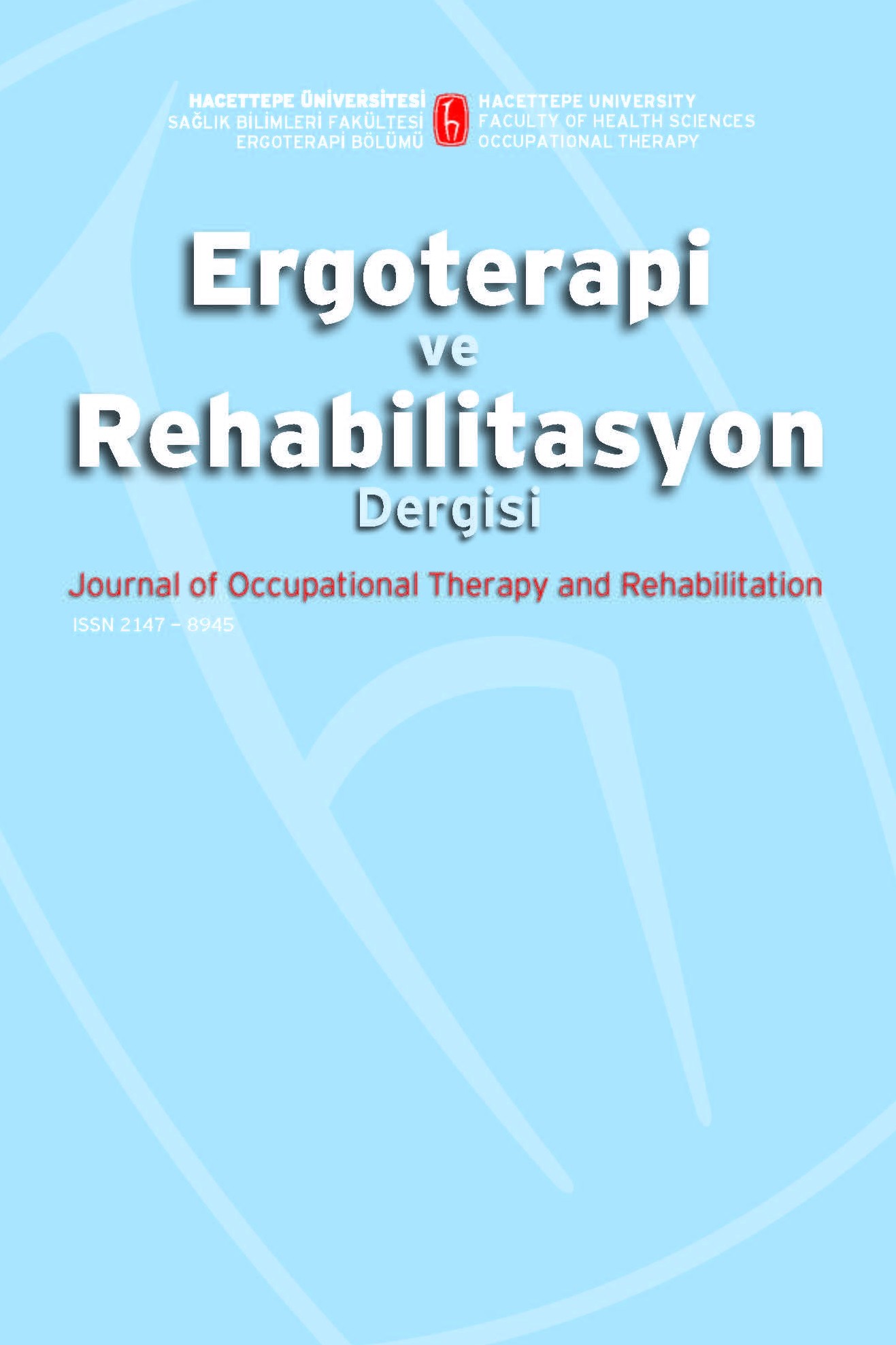Öğrenme Güçlüğü Olan Çocuklarda Duyu Bütünleme Eğitimi’nin Etkinliğinin İncelenmesi
Amaç: Bu çalışmada öğrenme güçlüğü olan çocuklarda duyu bütünleme eğitiminin etkinliğinin incelenmesi amaçlanmıştır. Gereç ve yöntem: Çalışmamıza okul öncesi eğitime veya ilköğretime devam eden 6-10 yaş arasında dikkat dağınıklığı ve okul başarısında düşüklük, artikülasyon bozukluğu, öğrenme ve algılama güçlüğü nedeniyle başvuran ve DSM 4 tanı ölçütlerine göre öğrenme güçlüğü tanısı alan çocuklar dahil edilmiştir. Çalışmaya katılan çocukların duyu profili DUNN Duyu Profili ile; motor performansı Nöromotor Performans Gözlem Formu, görsel motor algı becerileri Bender Gestalt Görsel Motor Algı Testi ile değerlendirilirken, öğretmenlere Öğretmen Gözlem Formu uygulandı. Çocuklara 2 ay boyunca haftada 2 gün duyu bütünlüğü eğitimi uygulanması ve sonrasında testlerin tekrarlanması planlandı. Sonuçlar: Çalışmaya öğrenme güçlüğü tanısı ile takip edilen 5 çocuk dahil edildi. Çocukların duyusal profilleri, nöromotor becerileri, görsel motor algı becerileri yapılan ilk değerlendirmeler sonucunda duyu bütünlüğü problemi ile uyumlu idi. Yapılan gözlem ve değerlendirmeler dikkate alınarak her çocuğa özel müdahale programı planlandı ve çalışmamız devam etmektedir. Tartışma: Literatürde öğrenme güçlüğü olan çocuklarda duyu bütünlüğü eğitiminin etkilerini araştıran çalışmalar vardır. Çalışmamız sonuçları ile öğrenme güçlüğü olan çocuklarda duyu bütünleme tedavisinin etkinliğinin araştırıldığı literatür ile tartışılması yapılacaktır
Analysis of Efficiency of Sensory Integration Therapy in Children with Learning Disabilities
Purpose: Our purpose in this study is to analyze the efficiency of sensory integration therapy with children that have learning disabilities. Materials and Method: The patients selected for this study are 6-10 years old. They are in preschool or primary education. Inclusion criteria were having applied to our clinic with complaints of distractibility, articulation disorders, absence of perception, failure in lessons, learning disabilities and diagnosis of learning disability according to DSM IV diagnostic criteria. Before starting the therapy of patients, motor performance was measured using neuromotor performance observation form, sensory profile of patients were evaluated using DUNN sensory profile test, and we used Bender Gestalt Visual Motor Perception test for visual motor perception skills. For the teacher, Teacher Observation Form was performed before the start of the therapy. The sensory integration therapy was performed for 2 days in week, for 2 months and then it was planned to repeat all the tests. Results: 5 children patients that had the diagnosis of learning disability were incorporated into this study. After the first evaluations, it was seen that these children’s sensory profiles, neuromotor performance and visual motor perception were in accordance with the sensory integration diagnosis. Considering the observations and evaluations that were done, a personal therapy method was planned for each child and our study has been continuing. conclusion: There are studies in literature which analyze efficiency of sensory integration therapy in children with learning disabilities. These studies are going to be discussed after we get the results
